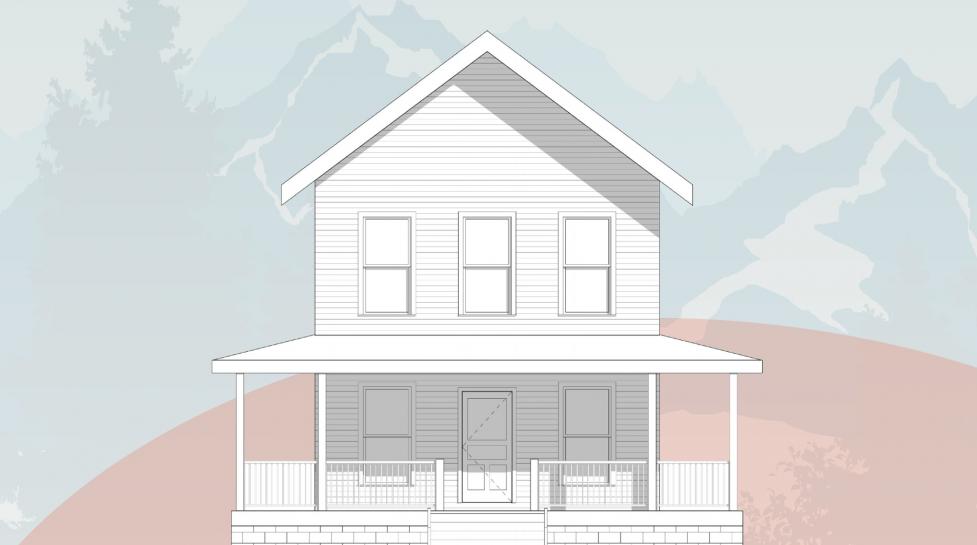Create and Maintain Defensible Space, Choose Fire-Resistant Building Materials, Be Ember Aware!
Create and Maintain Defensible Space
Creating defensible space around your home and making other improvements will increase the chances that your home can survive a wildfire. Defensible space is an area of 30 feet or more around your home that is kept free of features that tend to increase the risk of your home being destroyed. Other improvements include improving driveway access and water supplies, having a fire-resistive roof, enclosing overhanging eaves and decks, spark arresters on chimneys, etc.
Here are some quick tips for creating defensible space. For more detailed information please see the Wildland Fire Preparedness Guide. Remember to begin from the ‘home zone’ and work outward.
10 Steps to Defensible Space
- Create a ‘fire-free’ area within five feet of the home, using non-flammable landscaping materials and/or high-moisture-content annuals and perennials. Consider using pebbles or rock-scape instead of mulch near the edge of the home.
- Remove dead vegetation and any combustible material (like firewood) from under deck and within 10 feet of the house.
- Mow your lawn regularly.
- Clean roof, deck and gutters regularly.
- Trim back trees that overhang the house.
- Prune (limb) tree branches up to 10 feet. Install hardscape at the base of trees.
- Remove leaves and other debris from around home, especially in areas where the wind ‘eddies’ and deposits leaves and trash.
- Space trees 30 feet apart.
- Choose ‘Firewise’ plants and flowers for your yard. Encourage a mix of deciduous and coniferous trees. For a list of recommended plants (pdf).
- Maintain your irrigation system regularly.
Choose Fire-Resistant Building Materials
The building materials that make up the exterior of your home may be the deciding factor of whether or not your home survives a wildfire. Here are some suggestions:
Decks and Fencing: Anything attached to the house (decks, porches, fences and outbuildings) should be considered part of the house. These act as fuel bridges, particularly if constructed from flammable materials. If a wood fence is attached to the house, separate the fence from the house with a masonry or metal barrier. Decks and elevated porches should be kept free of combustible materials and debris. Choose non-combustible deck furniture and keep cushions inside when not in use.
Roof: Use roofing material with a Class A rating is fire resistant and will help keep the flame from spreading. Examples: Composition shingle, Metal, Clay, Cement tile. The City of Boulder has an ordinance banning the use of wood shake rooves.
Gutters: Keep your gutters clear of flammable material. Check them often, wildfires can occur at any time of year! Also, consider gutter designs that prevent flammable material from entering gutters.
Eaves/Roof vents: Enclose eaves, fascias, Soffits and Vents. ‘Box’ eaves, fascias, soffits and vents, or enclose them with metal screens. Vent openings should be covered with 1/8” metal screen. Protect Overhangs and Other Attachments. Remove all vegetation and other fuels from around overhangs and other attachments (room additions, bay windows, decks, porches, carports and fences). Box in the undersides of overhangs, decks and balconies with non-combustible or fire-resistant materials.
Siding: Use Fire-Resistant Building Materials on Exterior Walls. Examples include: Cement, Plaster, Stucco, Masonry (concrete, stone, brick or block). While vinyl is difficult to ignite, it can fall away or melt when exposed to extreme heat.
Windows: Use double-paned or tempered glass. Double-pane glass can help reduce the risk of fracture or collapse during an extreme wildfire. Tempered glass is the most effective. For skylights, glass is a better choice than plastic or fiberglass.
Be Ember Aware!
Experience shows that most homes damaged or destroyed by wildfires are ignited by embers, not the flaming front. As you are creating your defensible space and choosing building materials, consider the following: “If an ember were to land here, would the resulting fire threaten my home?”
More information
Here are some links to find more information about preparing your home for wildfire:
